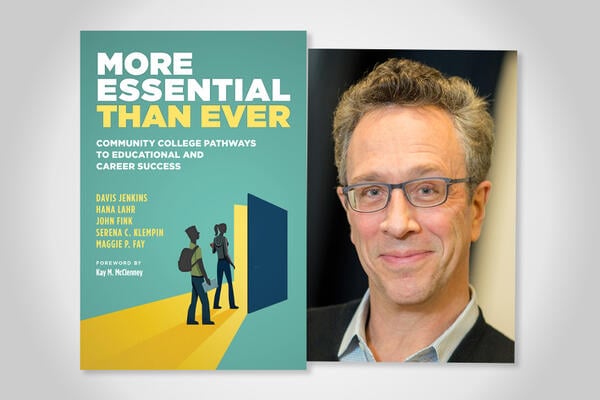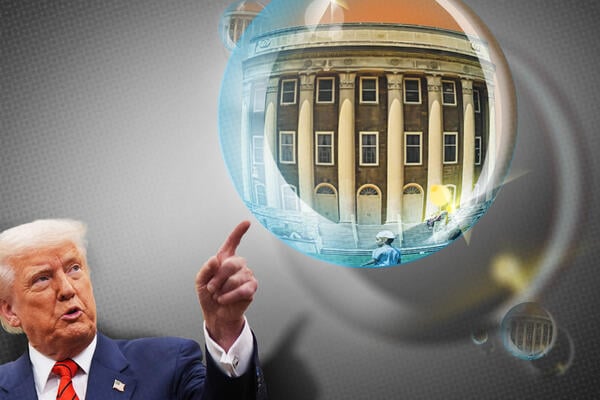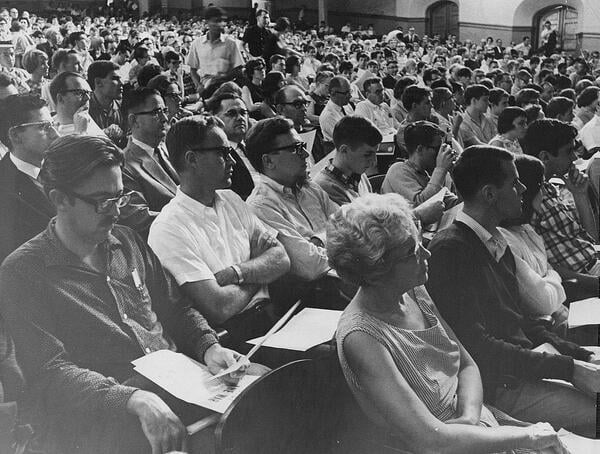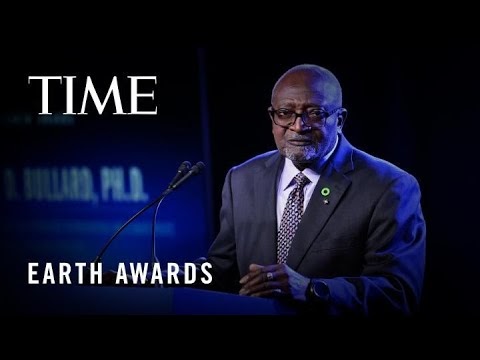In recent years, hundreds of community colleges have embraced the guided pathways model, a sweeping set of large-scale reforms to better steer students through academic programs and boost completion rates at community colleges.
Researchers at the Community College Research Center at Columbia University’s Teachers College first introduced plans for the reform movement in 2015 in a book called Redesigning America’s Community Colleges: A Clearer Path to Student Success. They called on colleges to adopt a wide range of practices to help students devise and follow academic plans through graduation, including mandatory academic and career planning for all students; programs organized by “meta-majors,” or fields of interest; and extra supports for students in college-level math and English courses.
A decade later, CCRC researchers have come out with a follow-up, More Essential Than Ever: Community College Pathways to Educational and Career Success (Harvard Education Press, 2025), which recounts their 10 years of research on the progress and outcomes of guided pathways. The book also explores areas where they believe the model could grow, including looking beyond graduation rates to focus on students’ job outcomes, adopting more engaging recruitment and onboarding practices, and ensuring students leave college with specialized knowledge in their fields but also versatile skills that apply to different industries.
Davis Jenkins, senior research scholar at CCRC and a co-author of More Essential Than Ever, spoke with Inside Higher Ed about the book’s prescription to community colleges for taking guided pathways to the next level.
The conversation has been edited for length and clarity.
Q: This book is the culmination of 10 years of research on guided pathways. What have been the most important lessons learned in that decade?
A: The 10 years were really a learning experience, because the model for whole-college reform that Tom Bailey, Shanna Jaggars and I presented in Redesigning America’s Community Colleges in 2015 was very much theoretical. A lot of the ideas came out of four-year institutions, and maybe with the exception of Guttman Community College and others, no community college really had implemented these ideas. So, we’ve been learning along with the field. And you know, we’re impressed and humbled by the efforts by colleges in a very tough time, fiscally and otherwise, to really work on these efforts.
And what we saw in the initial phase was it takes a long time to not just implement discrete interventions but to redesign whole parts of the student experience, from the start all the way through. But we saw that colleges that did focus on redesigning, not just one piece of the student experience but across the student experience, were able to achieve improvements in student early momentum and then, over the longer term, in completion rates.
On one hand, it was important that colleges not just focus on one aspect, that they sort of changed the student experience throughout. But when we looked at particular practices, especially important was organizing advising, at least for continuing students, by career or academic field and then case managing those students’ progress based on students’ plans. It’s very important to have a plan for students, and students really want that plan.
During this time, the environment changed, and community college enrollments, especially post–high school enrollments, continued to decline. There was a rise in focus on the value of a college degree, and while this was focused very much on four-year institutions—especially elite institutions—people were [also] questioning community colleges. Enrollment by older students is at historic lows. And even though community colleges have seen a huge increase in high school dual-enrollment students, they have been losing market share to public four-years for students right out of high school. So, there was this big focus on value. And we were able to observe and work with colleges as they adapted these completion-focused reforms to focus more on value.
And the main part of the book is five chapters devoted to what we see as the frontiers for further improving community college student outcomes, which are focused on values.
Q: Tell me more about that. In the book, you looked at how far this movement has come. How do you hope the guided pathways model continues to evolve?
A: There are five areas where we see colleges now working to improve. First of all, they’ve got to make sure that their programs lead to jobs that pay at least a living wage—otherwise, it’s not going to be worth students enrolling in them—or [allow] transfer with no excess credits in the student’s major field of interest. Related to that, though, it’s not enough just to work with universities and employers to ensure your programs have value for employment and further education after completion. You’ve got to make sure that students are learning the kinds of skills that they’ll need in the workplace and for their education. And frankly, that was probably the area of least progress in the earlier work in guided pathways.
Particularly important is making sure that students have a rich learning experience in their program foundation courses, the hard 101 courses. In the book, we profile both very large and small colleges that have really built in experiential learning for all students. So that’s No. 2.
No. 3 is focusing on onboarding. Community colleges lose many students early on because they don’t engage them. And so, in the later part of our work on guided pathways, the more recent part, we focus very much on this onboarding process to ensure students are engaged about what they want to do and help them connect to people and have this inspiring learning experience, and then very, very importantly, help them develop a plan that will at least give them direction.
No. 4 is building on that plan. There have been efforts around compressed courses and scheduling, but in the book, we say that colleges need to look at this very systematically. The canonical completion [rate] for community college is two years. They’re called two-year colleges. But in fact, hardly any students complete in two years, and it’s not reasonable to expect all students, even the majority of students, to [take] 15 credits. In the book, we’re seeing colleges take three years as a template. And we know that if you include summer courses, if you include J terms, if you compress your terms, students even attending part-time can complete their programs. And community college students have very little margin for error. It’s very important that they be able to take the courses they need when they need them.
Then, finally, as you know, dual enrollment has become huge. And colleges have taken, in the past, a very laissez-faire approach to it, such as the students who participate are students who are already likely going to college. And that’s a good thing because that makes dual enrollment very popular among middle-class families, and that gives it political power. But it’s also been sort of random courses, gen eds, without much advising. For students already going to college who have good advising from their families or from their better-resourced schools, that’s fine. But we have created this idea of applying the guided pathways practices to dual-enrollment students, to build an on-ramp, to motivate students to want to continue their postsecondary education.
Q: It seems like, in the book, there’s a tension between, on one hand, striving to set students on a clear career path, a career ladder, while also trying not to box them into a track or a skill set that’s too narrow. How do you think colleges can balance both?
A: This has always been the tension with guided pathways. Early on, there was a lot of emphasis on structured pathways, making things much more like a technical program, like an occupational certificate program. Not knocking it; those kinds of programs are important. But you’ll notice throughout, we’re focused on broad learning, skills, communication [and] problem-solving, and that can only be done through active, contextualized learning.
The goal of guided pathways is not to set a student on a career. Careers are changing. The goal is to get a student engaged, to feel like the institution cares about their future, connect them with faculty and other students, employers, people they never would have met before that. It’s not just about learning skills or knowledge. It’s about connecting with people, building confidence in taking a really hard course that makes you really work and think. Students don’t like it. They’re not used to it in K–12 education. On the other hand, there’s just so much research showing that that’s really important.
And then the plan is not a plan for life, but a plan is a direction to get you a credential and then to build into that enough experience. We make this case throughout, including at the end, there’s still a need, and it’s well documented, for a broader education—including technical skills, obviously, and content knowledge, but really in engaging students in problem-solving, communication—because those are the human skills that employers are going to pay a premium for and that are needed for further education at the bachelor’s level and in life.
Q: As you’ve been thinking through where you want the guided pathways model to go, what do you think are going to be the biggest obstacles or challenges to colleges getting there?
A: Well, one thing is the rise of online students. On one hand, we’re not against online. But the question is, especially for students in foundation courses and for students in high school, how to do it in a way that is engaging students. We’re very skeptical of asynchronous online instruction. Maybe for older students, career students, that’s OK, but not for students taking a foundation course that really is hard and needs interaction.
The other [challenge] is funding. Community colleges are already always relatively low funded. It varies greatly by state, but nationally, about 40 percent [of their funding] comes from states. The second highest [funding source] is tuition. Asking community colleges to turn out high-value programs and to do all this advising is expensive. Thus far, community colleges have done this by redeploying their existing resources, which is actually a good thing, because they, like every institution, have tended to become too siloed. But there’s a limit to which community colleges can do more with less, and particularly in these high-cost, high-value workforce areas, those are very expensive, and our STEM programs and the like.
So, the cuts in federal funding are concerning because community colleges throughout the country have used them to develop new programs and to focus advising and other supports on students from groups that haven’t done well in higher ed. Over the longer term, we’re concerned, since higher education is the biggest discretionary pot in about every state budget, the cuts to Medicaid and other fiscal pressures on states are likely to put big pressure on funding for higher education, of which community colleges, even compared to public regional four-years, are heavily dependent.
One more thing is that guided pathways is basically asking colleges to take this very successful model that was the marvel of the world, that really helped broad-access education, and to change it—and to do so, by the way, with no money, or not enough money. We do a lot of work with colleges all over the country. We’ve done a lot of work with rural colleges. And in many ways, they have been facing the pressures that all higher ed is facing now for a long time: declining population, the challenge of helping students get living-wage jobs. [But] there’s something about community colleges. They just dig right in. Despite the challenges, I’m optimistic.
It’s been humbling to go all around the country, working in so many different places. I don’t see them giving up on this. Despite all the challenges, I think, especially given their product, the fact that they’re local, the fact that they’re connected to local employers, and especially now, have this opportunity to build a better pipeline from schools, and are doing that. I think community colleges are going to rise to the challenge here.










